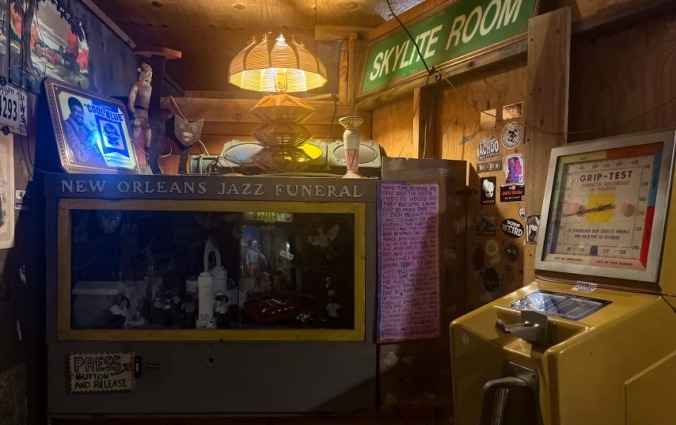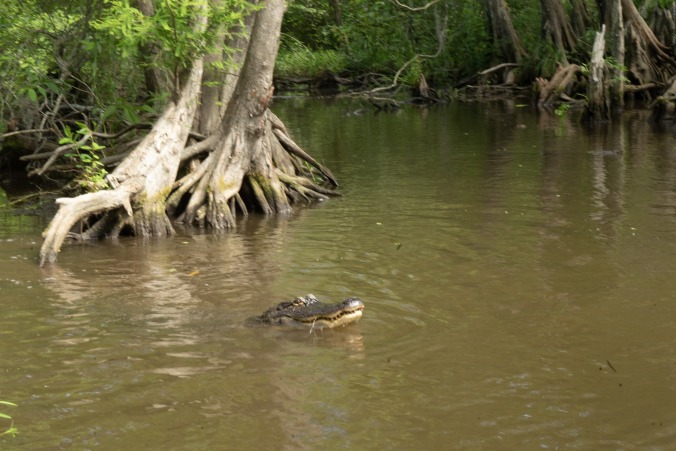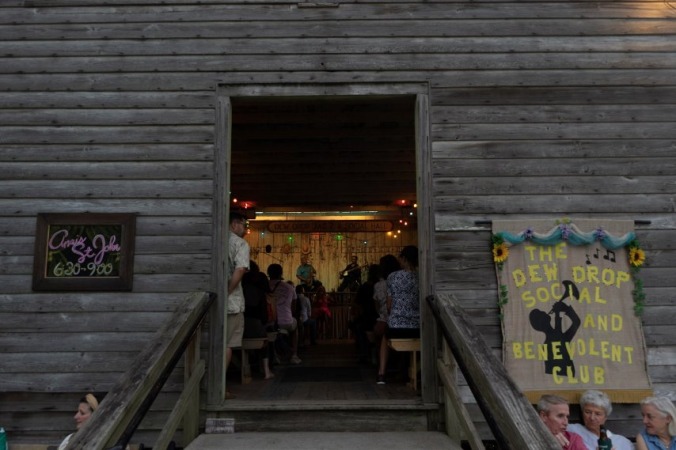Where To Go In Southeast Louisiana (That Isn’t New Orleans) Part One: The Northshore
Photos by John Sizemore
When many people think of Louisiana, a blurry haze of beads, jazz, laughter, and the strange characters of New Orleans typically come to mind. The city’s awesomeness is well documented on these pages (including a couple of articles by yours truly), and when it comes to my favorite cities in the country, it’s at the top of the list.
As much as I love The Big Easy, the fact remains that Louisiana is much, much more than New Orleans, and on a recent trip there, I learned that I had been selling myself short all these years by not exploring the places around it. After all, this is a state extremely rich with culture, and just beyond the city’s borders, one can find other chapters to the lively Louisiana story through its vibrant swamps teeming with life, fun takes on local traditions like Mardi Gras, the energetic rhythms and melodies of zydeco and swamp blues, and an entire world of Cajun cuisine that is not only some of the best food in the United States, but the entire world.
Coming in just west of New Orleans from Jefferson Parish (Louisiana is one of two states where what are usually called “counties” are referred to as something else), I entered The Northshore beginning with a hypnotic journey across the Lake Pontchartrain Causeway, whose meditative 25 miles over open water feels like entering a different world. The long, formless spit of horizon far away gradually took shape, and before long, I found the swaying palms surrounding the sign for Mandeville greeting me in St. Tammany Parish.
I crisscrossed flat streets flanked with quaint southern-style homes until I found de la Bleau, my accommodations for the evening. I was struck by the massive columns hoisting up the petite bed and breakfast, whose relaxing interior was adorned with welcoming maritime art. A large staircase descended from the front door to the ground level, where I found a surprise elevator under the central column offering easy passage to the structure’s upper floors. As I walked up the stairs to my room, despite the faint glow of the lights of New Orleans visible across the lake, the salt in the air and the sound of the waves felt more akin to being at the beach than existing within earshot of a major U.S. metro.
As a native Southerner, I am no stranger to the awesomeness and mystical healing qualities of a proper Southern breakfast. The following day at LaLou, a comfy eatery inside a petite house decorated with quirky art, my eyes and stomach heartily welcomed the sight of biscuits, grits, and waffles. I would need the fuel—the afternoon would consist of a bike ride along the Tammany Trace, an attractive, leafy trail connecting the communities of St. Tammany Parish. I headed next door to Brooks’ Bike Shop, a funky co-op adorned with local art, where I picked up my rental. I took in the morning air with a brief ride along the lake, where I saw a rare alligator poking its nose above the water to greet the morning with me, and then I disappeared into the thick woods of the Trace.
Entrances are easily found—the Trace was created out of a former rail line, conveniently leaving behind lovely old train stations that often double as entry points, museums, and the occasional makeshift music venue. I rode past Mandeville’s “station,” vanishing into a tunnel of towering pines and froggy creeks until I popped out at the next stop in Abita Springs.
The word “Abita” carries weight in Louisiana—the famous beverage brand is everywhere in the state, and fans shouldn’t pass up visiting the Abita Brew Pub, the original brewery site before the brand outgrew the space in 1994 and converted to an eatery. The restaurant offers burgers, pasta, and regional classics like jambalaya and catfish etouffee that are the perfect place to enjoy the famed Amber Ale, Purple Haze, the playfully titled “The Boot” (named after Louisiana’s distinctive shape), and other drinks exclusive to the pub. It wouldn’t be a trip to Louisiana without having at least one shrimp po-boy doused in Crystal sauce, which I happily devoured with sweet Abita Root Beer while I people-watched travelers on the Trace.
While big on charm, Abita Springs is tiny—the town center is scarcely more than the Abita Brew Pub, a grocery store with an entire section of trademark Louisiana spices, a tavern, and a gas station. Among these buildings, visitors will undoubtedly notice the peculiar structure on the edge of town that seems about to burst with intriguing art and sculptures on the verge of swallowing the property. Indulging my curiosity, I began approaching until I found myself at the door of the Abita Mystery House.

Louisiana is a famously and beautifully strange state, and that trademark spirit breathes through the very walls of this place. In a time where it feels like “authentically weird” is difficult to come across, yet all the more precious when it is found, I took a moment to appreciate and take in the unique, endearingly unusual atmosphere as I explored the maze-like property. I was happy that there didn’t seem to be any upper bound on weirdness or pattern to whatever I discovered—among other things, I found a cheeky diorama detailing the end of the dinosaurs, an electronic New Orleans jazz funeral made out of dolls, models of Louisiana cryptids, an explorable silver UFO, a working “two-man organ,” and the “House Of Shards,” a literal building whose walls are entirely covered in a mosaic of tiles, mirrors, and glass. There was no limit on the media used to make these creations and contraptions—they could be made from antique pinball machines, computers from the 1980s, aged bicycles, musical instruments, toy dinosaurs, old signs, random junk, and anything else one could possibly imagine.
Next up was Covington, another attractive small Southern town off of the Trace whose downtown, on the National Register of Historic Places, is a delightful, walkable district filled with art galleries, museums, and cute shops. I parked in one of the several free “ox lots” and headed to Meribo, an artisanal pizza joint emblematic of Covington’s thriving food scene. It took only a few minutes of browsing the menu before I opted for two pies—one red and one white—with amusing names. Before long, “The Vinnie” and “The Rocket” arrived at my table, where I enjoyed their taste, just as endearing as their names, as the afternoon faded.
-

- Curated Home Page Articles By Test Admin October 21, 2025 | 3:10pm
-

- Curated Home Page Articles By Test Admin October 21, 2025 | 2:57pm
- Urls By Test Admin October 21, 2025 | 2:57pm
- Curated Home Page Articles By Test Admin October 21, 2025 | 2:55pm
-

-

-

-

-

-

-

-

-

-

-

-

-

-

-

-

-

-

-

-

-

-

-

-

-

-

-

-

-

-

-

-

-

-






































